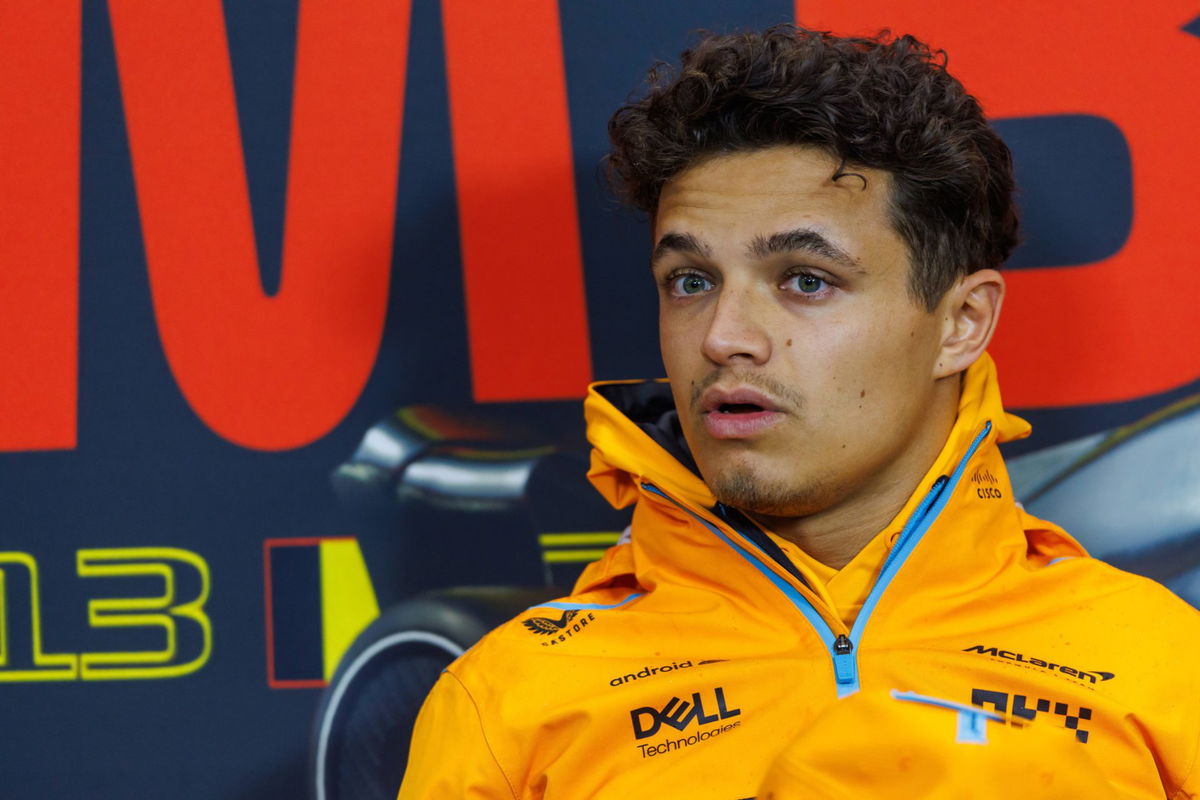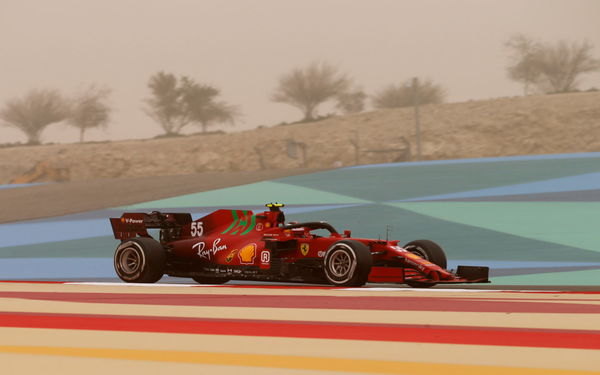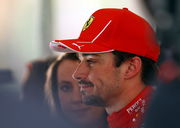
Imago
Lando Norris McLaren F1 Team, Grosser Preis von Belgien, Motorsport, Formel 1, Saison 2023, 27.07.2023 Grosser Preis von Belgien, Motorsport, Formel 1, Saison 2023, 27.07.2023 Spa / Franchorchamps *** Lando Norris McLaren F1 Team , Belgian Grand Prix, Motorsport, Formula 1, Season 2023, 27 07 2023 Belgian Grand Prix, Motorsport, Formula 1, Season 2023, 27 07 2023 Spa Franchorchamps Image Courtesy: Imago

Imago
Lando Norris McLaren F1 Team, Grosser Preis von Belgien, Motorsport, Formel 1, Saison 2023, 27.07.2023 Grosser Preis von Belgien, Motorsport, Formel 1, Saison 2023, 27.07.2023 Spa / Franchorchamps *** Lando Norris McLaren F1 Team , Belgian Grand Prix, Motorsport, Formula 1, Season 2023, 27 07 2023 Belgian Grand Prix, Motorsport, Formula 1, Season 2023, 27 07 2023 Spa Franchorchamps Image Courtesy: Imago
In the lead-up to the Dutch Grand Prix, McLaren has devised a slick and inventive solution to counter the uproar sparked by health organizations over the sponsorship of a snus company on their racing cars. The controversy, centered around the $186-billion British American Tobacco’s (BAT) nicotine-pouch brand, has taken an unexpected turn as McLaren strategically sidesteps potential legal issues.
Watch What’s Trending Now!
Notably, the Dutch health organizations had expressed their concern over the presence of the VELO brand on McLaren’s cars during the event. Snus, a smokeless tobacco product, is prohibited for sale in the Netherlands but is allowed to be advertised. The health foundations raised objections and formally lodged a complaint with the Advertising Code Committee, urging the exclusion of the VELO brand from the race cars.
LOVE ou VELO, le sponsor de McLaren #F1 fait grincer des dents aux Pays-Bas ! 😬#F1 #DutchGP https://t.co/jqr0h5ILCS
— Motorsport France (@Motorsport_FR) August 17, 2023
ADVERTISEMENT
However, the situation has taken a twist. Instead of displaying the contentious VELO branding, the McLaren race cars at Zandvoort showcase the word “LOVE” on their sidepods. This creative solution seems to adhere to both the letter and the spirit of Dutch law, effectively steering clear of any explicit mention of VELO while satisfying advertising requirements.
McLaren’s partnership with VELO dates back to 2019, and the collaboration has endured its share of challenges. The decision to replace the VELO branding with the word “LOVE” at the Dutch Grand Prix appears to be a collaborative move between the two entities. In the face of mounting controversy, BAT refrained from commenting on the matter. Initially, McLaren chose to remain tight-lipped as well, preferring not to engage in the debate stirred in the Netherlands. However, the racing team eventually released a concise statement clarifying their stance. According to McLaren, all logos featured on their race cars adhere rigorously to the legal prerequisites and advertising standards applicable in the countries where they participate in races.
Read More: Lando Norris Drops Cryptic Message on McLaren Future Amid Enticing Pull From Max Verstappen & Co.
ADVERTISEMENT
As the Dutch Grand Prix unfolds, McLaren’s strategic maneuver serves as an example of ingenuity and adaptability when facing potential bans or objections. This incident underscores the complex intersection of sports, business partnerships, and local regulations, leaving an indelible mark on the evolving landscape of motorsports advertising.
ADVERTISEMENT
A short view back to the past for McLaren: When Mission Winnow logos were removed from the Ferraris for EU Races
The decision marked a departure from the norm, as Mission Winnow, an initiative introduced by Philip Morris as part of their shift toward a non-tobacco future, has held the title partnership with Ferrari since its launch at the 2018 Japanese Grand Prix.

Reuters
Formula One F1 – Pre-Season Testing – Bahrain International Circuit, Sakhir, Bahrain – Ferrari’s Carlos Sainz Jr. in action during testing REUTERS/Hamad I Mohammed
The prominent presence of Mission Winnow logos on the Ferrari engine cover and various sections of the car, including the rear wing, had been a noticeable feature. However, this presence was not constant due to concerns surrounding potential controversies and legal issues related to tobacco advertising laws. Furthermore, there was anticipation for the 2022 F1 season as Scuderia Ferrari was poised to replace Mission Winnow as the title sponsor. The team’s official name shifted from Scuderia Ferrari Mission Winnow to Scuderia Ferrari, signaling a potential branding shift in the near future.
ADVERTISEMENT
Watch This Story | $300,000 McLaren Legacy Dedicated to Ayrton Senna Craned into $39,000,000 Penthouse
Top Stories
Who Is Canadian F1 Billionaire Lawrence Stroll’s Daughter & Heiress Chloe Stroll?

Who Is Oscar Piastri’s Father, Chris Piastri? Co-Founder of Multibillion Dollar Automotive Company

Why Does the Internet Dislike Charles Leclerc’s GF, Alexandra Saint Mleux?

Who Is Charles Leclerc’s Mother, Pascale Leclerc?

“Leave the Girl Alone”: Fans Defend Carlos Sainz’s GF Rebecca After Ugly Incident

In another comeback, the team successfully rekindled its partnership with Santander on a multi-year agreement. The bank, which previously sponsored the team from 2010 to 2017. Ferrari now features its logo on a range of team merchandise, including race suits and caps, further augmenting the team’s corporate alliances.
ADVERTISEMENT
ADVERTISEMENT
ADVERTISEMENT

